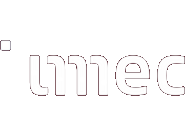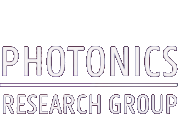Axithra’s groundbreaking optics and photonics technology aims to revolutionize bedside therapeutic drug monitoring with its unparalleled speed, cost-effectiveness, and accuracy.
Our mission is to provide healthcare professionals with rapid, clinically actionable results tailored to the individual patient to ensure drug effectiveness, avoid adverse drug reactions, improve patient outcomes, and accelerate advantageous health economics.
Our technology leverages the power of photonics to rapidly and accurately detect and quantify the molecular fingerprints of compounds in patient blood.
Unlike other approaches, we specifically measure the concentration of the active, free fraction of drugs to provide the most reliable and clinically meaningful results for personalized therapeutic drug monitoring. We achieve active drug fraction measurements with our proprietary method, implementing Raman spectroscopy on a chip to enable rapid and accurate tailored dosing adjustments.
Our technology is currently under development and under clinical investigation, and is not available on the market and not for sale. The product is not FDA cleared, nor CE-marked.
Our technology
Our technology leverages the power of photonics to rapidly and accurately detect and quantify the molecular fingerprints of compounds in patient blood.
Unlike other approaches, we specifically measure the concentration of the active, free fraction of drugs to provide the most reliable and clinically meaningful results for personalized therapeutic drug monitoring. We achieve active drug fraction measurements with our proprietary method, implementing Raman spectroscopy on a chip to enable rapid and accurate tailored dosing adjustments.
Our technology is currently under development and under clinical investigation, and is not available on the market and not for sale. The product is not FDA cleared, nor CE-marked.
Rapid readouts for actionable therapeutic drug monitoring
Accurate measurements of the free drug fraction for personalized dosing
Seamless clinical workflow integration with no sample pre-treatment
Quick and cost-effective with low implementation and usage expenses
Simultaneous quantification of multiple drugs
No biomarker development required
No background interference
The need for rapid therapeutic drug monitoring
Therapeutic drug monitoring leads to better clinical outcomes, reduced drug toxicity, lower mortality, reduced health- care spending, improved antimicrobial stewardship, and better global health.
However, current methods are too slow, expensive, and not scalable enough for effective clinical use at the point of need, where its impact would be greatest.
To deliver maximum impact for patients and clinicians, our current and future application pipelines target the therapeutic drug monitoring of antibiotics, oncology drugs, antifungals, and patient adherence assessment.
Antibiotics
Contact us to find out more
Proudly supported by


